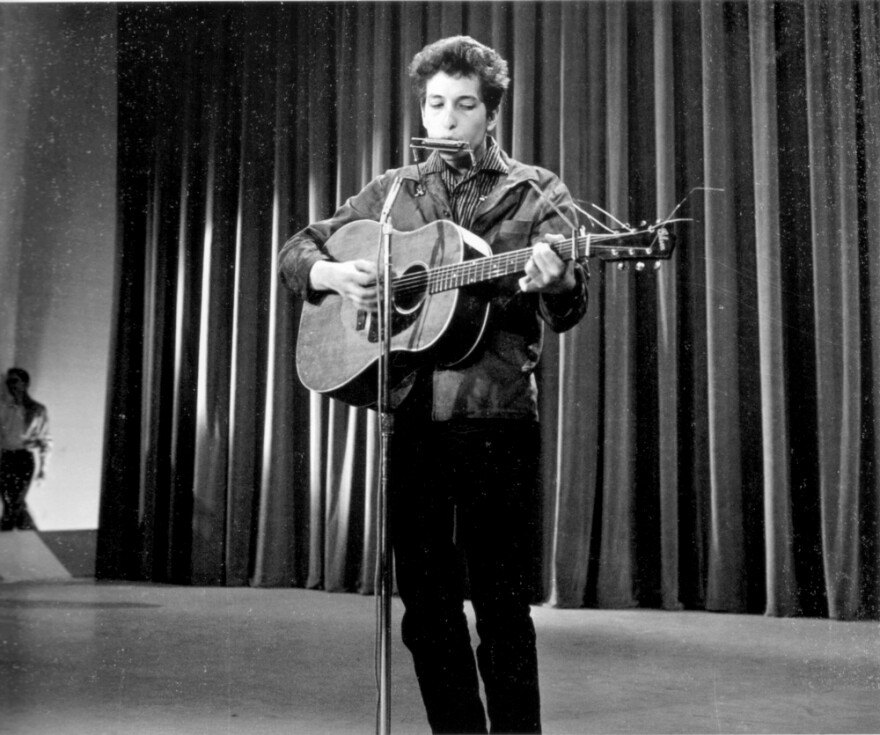It was recently announced Tulsa is the permanent home of the Bob Dylan Archive, a collection of more than 6,000 items offering a look into nearly 60 years of the folk music icon’s life and work. While it will be a couple years before the entire archive is in Tulsa, more than 1,000 pieces of the collection are already here.
Michael Chaiken is the man bringing together all those items — writings, recordings, film clips, even some instruments — all pieces of the Bob Dylan Archive. The big job comes with a big title.
"I'm the inaugural curator of the Bob Dylan Archive. I know that’s a mouthful. We’ve gotta figure out a way to shorten that," Chaiken said.
Chaiken got word the archive was coming together two years ago while in New York working on the archives of documentary filmmakers D.A. Pennebaker and Chris Hegedus. He’s a self-described Dylan fanatic and marvels at how well-kept the musician’s archive is — what he’s seen of it, at least.
"His office had been kind of maintaining and collecting this material over decades and had done an incredible job of keeping it together and vetting it and organizing it," Chaiken said. "Otherwise, this probably would have taken me 15 years, you know."
Chaiken says the archive reveals a side of Dylan people often forget because his songs are such a part of our culture.
"There's his genius and there's his native wit and there's his talent and there's all those things, but the other half of that equation is his discipline as a writer and as a ruthless self-editor," Chaiken said.
Dylan often changes songs’ tempos or lyrics during performances. Chaiken says the most revealing thing about the archive is its window to Dylan’s nature to constantly evolve. There are several copies of song manuscripts the musician’s office would send him for final approval before filing for copyrights.
"And he was still making changes. He would send the copyright manuscripts back with more changes on them, and he would ask that they be copyrighted this way, which is different than how he sang it on record," Chaiken said.
He believes that helps Dylan’s artistic longevity.
"He is kind of the quick-change artist par excellence, and his ability to keep on working and thinking about these songs is what really keeps him going," Chaiken said.
Most of what's in Tulsa now is original drafts of songs. When I visited, there were scrawled early versions of "Tombstone Blues," "Chimes of Freedom" and "Visions of Johanna" on display.
"And they’re in much different, you know, stages. "Chimes of Freedom," you could tell that Bob had some of the verse strategy already worked out, even though he’s working into the song," Chaiken said. "If you look at the "Tombstone Blues" fragment, it's just one verse. It's just probably one idea or one lyric that had come into his head that he just needed to immediately get down and start working on."
Chaiken says the various versions help trace the genealogy of Dylan's songs.
"That's very unique, I think, in any archive. I mean, who's had a career as long and as varied as Bob Dylan in popular music or in writing?" Chaiken said.
Undoubtedly, the Bob Dylan Archive is a valuable collection. The University of Tulsa and the George Kaiser Family Foundation reportedly paid up to $20 million for it. Chaiken admits he's not involved in the hands-on science of preservation work but says the archive is in good hands at the Helmerich Center.
"They have a draft of the Declaration of Independence here, so you know these are some very serious people," Chaiken said with a laugh.
Ultimately, the entire Bob Dylan Archive will be available for scholarly research, and there will eventually be a public exhibition in Tulsa's Brady Arts District.



